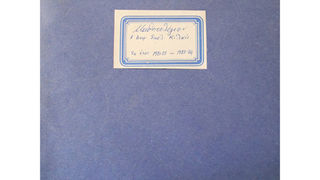The narratives of the absentees. Reconstructing the school’s past through its archival material

Through this educational activity, the pupils embarked on an adventure to uncover the school’s history and learn more about their surroundings. By revisiting the school registers corresponding to a four-year period, namely from 1921 to 1925, and reorganising the information in database records, the pupils investigated the history of the Boys’ School, which represents the educational system of its time. A database was created featuring the following information for each pupil: Registration Number - First and Last Name - Age - Class - Father's Occupation - Grade in the Greek Language - General Grade, Attendance Information, and Homeland. A total of 1,253 pupils were recorded gradually by ten-member teams working on a rotation basis. The pupils discussed and drew conclusions about the then refugees’ homelands and the occupations of that era, school attendance, school life, age ranges, and orphaned children, and observed the evolution of these data over the course of the four years in question.
They also searched for information about the refugees’ homelands, mapped them out, and recorded how Hellenism was expelled from those regions. They also sought information on the professional occupations of the period and their characteristics which were replaced by other occupations over time due to the drastic change in societal needs and conditions. Using the material gathered, as well as photographs from that era, they attempted to reconstruct the past by telling ‘everyday stories’; stories of both ‘pupils’ of the school and ‘refugees’ who arrived in the region at the turn of the century, attempting to create new roots. Lastly, the discussion expanded on potential connections to contemporary reality, linking the past with experiences of the present concerning contemporary refugee and migration issues through recent images of refugees fleeing to Europe. The diagrams, conclusions and texts were published on the website and constitute the school's contribution to the local community.
- A total of 70 pupils participated in this activity.